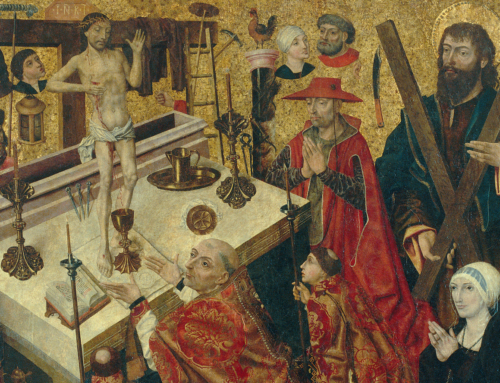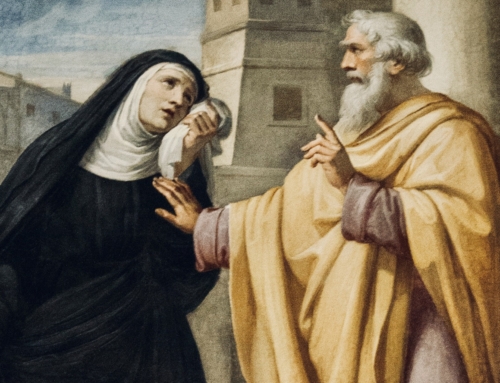The idea of a hug from Jesus can bring to mind the figure of a blue-eyed man with tousled brown hair, probably a big beard, and a cheesy grin with his arms stretched wide waiting for you. Or this time of year, we might think of a cute baby stretching out his hands with a lovely smile. Maybe these images aren’t very deep, but there’s nothing inherently wrong with the idea. Jesus probably didn’t look scary when the little children came running to Him, and He most likely hugged some of them.
A hug shows a particular kind of relationship, generally a close one. Of course, in some cases a hug is unwanted or inappropriate, but this is so precisely because the hug indicates a close relationship when such a relationship is lacking. What sort of a relationship does God’s embrace offer us?
Joseph Ratzinger suggests an understanding of sin as a broken relationship. Often, “human beings themselves want to be God”; that is, we try to reject our relationship of absolute dependence on God. In our pride, we see any kind of dependence on another as a form of slavery, and we naturally seek to break free of this slavery, violently if necessary. God’s greatness is infinite, however, and so He can give us life without diminishing His own life. His offer of love comes at no cost to Himself, so He has no need to demean or enslave us. When we try to reject God’s freely given love, then, in favor of becoming gods ourselves, we are not throwing off slavery but rejecting the only Source of life.
In the process, we proceed to mess up all of our relationships. With man now on top of creation instead of God, “everything is thrown topsy-turvy.” In forgetting how to relate to God, we forget how to relate to others. Each other man becomes “a hindrance, a rival, a threat to the person who wants to be God,” and our relationships with our brothers become ones “of mutual recrimination and struggle.”
Ratzinger points out that this explanation of sin also offers a way to speak about original sin. Human beings are always relational, for, he argues, they “have their selves not only in themselves but also outside of themselves: they live in those whom they love and in those who love them.” Sin, then, causes us to forget even how to relate to ourselves. This also means that one primordial sin, one initial damaged relationship, must result in damaged relations for all men. Each of us when born “enters into a world that is marked by relational damage,” and so none of us can perfectly love God, others, or even ourselves. Unless, that is, relationality can somehow be saved.
Our loving Father takes up this task with the astounding originality of a true Creator. God Himself “becomes completely dependent, he becomes a slave,” teaching us once again how to be properly relational. And, because teaching is not enough, He takes the initiative and offers to draw us back into His life: “His arms, spread out on the cross, are an open invitation to relationship, which is continually offered to us.” This is a mighty hug from Jesus.
But while this image sounds beautiful in words, it is not so beautiful in vision. These arms spread out in welcome are not the soft, gentle arms of the babe in the manger but the bloody, torn arms of a man in agony. Our earlier image of the grinning Jesus was somewhat cloying, but this new image is even less comfortable. Unlike the awkward friend who pulls us in for a hug whether we want it or not, Jesus leaves the choice to us—for His hands are nailed to the Cross and cannot pull us in.
To hug the Lord, we must climb up and unite ourselves to Him on the Cross.
The Maker of the heavens traded His garment of light for the lowly swaddling clothes of the manger, only to give it all up and be clothed in blood on the Cross. And He invites us to do likewise. This turns all of our expectations upside-down, but at the same time leaves us with the chilling suspicion that our ideas had been topsy-turvy to begin with.
Mother Teresa expresses all of this beautifully with the language of a kiss rather than a hug: “suffering is a sign that we have come so close to Jesus on the cross, that he can kiss us, show that he is in love with us, by giving us an opportunity to share in his Passion.”
✠
Image by IV Horton







